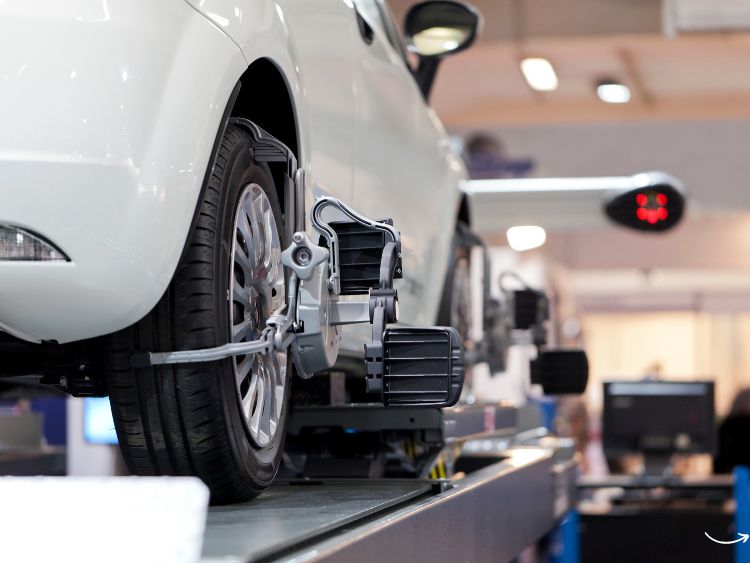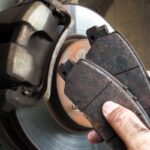Ever had that annoying pull to one side while driving? Or maybe your tires seem to be wearing out faster than expected? Chances are, your wheels are out of alignment. Keeping your wheels properly aligned is crucial for vehicle safety, performance, and longevity. But how do you ensure your wheels are in perfect alignment? Enter the wheel alignment tool. This handy piece of equipment is a game-changer for both professional mechanics and DIY enthusiasts. In this comprehensive guide, we’ll explore everything you need to know about wheel alignment tools, from what they are and how they work to the different types available and how to choose the right one for your needs.
What is a Wheel Alignment Tool?
A wheel alignment tool is a device used to measure and adjust the angles of your car’s wheels to the specifications recommended by the manufacturer. Proper wheel alignment ensures that your vehicle handles correctly, improves fuel efficiency, and extends the life of your tires.
Why Wheel Alignment is Important
Safety
First and foremost, proper wheel alignment is essential for safe driving. Misaligned wheels can cause your vehicle to pull to one side, making it difficult to control. This can be particularly dangerous in emergency situations where quick, precise steering is required.
Tire Longevity
Tires are a significant investment. Misalignment causes uneven tire wear, meaning you’ll have to replace your tires more frequently. Keeping your wheels aligned helps distribute wear evenly across the tire surface, extending their life and saving you money in the long run.
Fuel Efficiency
Did you know that misaligned wheels can affect your vehicle’s fuel efficiency? When your wheels are out of alignment, your car has to work harder to move, which means it consumes more fuel. Proper alignment ensures your vehicle runs smoothly and efficiently.
Types of Wheel Alignment Tools
There are several types of wheel alignment tools available on the market, each with its own unique features and benefits. Here’s a breakdown of the most common ones:
1. Bubble Levels
Bubble levels are the most basic type of wheel alignment tool. They use a simple bubble level to measure the angle of the wheel. While they’re easy to use and inexpensive, they’re not as accurate as more advanced tools.
2. Laser Alignment Tools
Laser alignment tools use laser beams to measure the angles of your wheels with high precision. These tools are more accurate than bubble levels and are commonly used by professional mechanics.
3. CCD (Camera) Alignment Tools
CCD alignment tools use cameras and computer software to measure the angles of your wheels. They’re incredibly accurate and provide a detailed analysis of your vehicle’s alignment. These tools are typically used in professional auto shops.
4. 3D Alignment Tools
3D alignment tools are the most advanced type of wheel alignment tool available. They use multiple cameras and 3D imaging technology to measure the angles of your wheels with extreme accuracy. While they’re the most expensive option, they provide the most precise measurements and are often used in high-end auto repair shops.
How to Choose the Right Wheel Alignment Tool
Selecting the right wheel alignment tool depends on several factors, including your budget, the type of vehicle you have, and how frequently you plan to use the tool. Here are some tips to help you make the right choice:
Consider Your Budget
Wheel alignment tools range in price from around $20 for basic bubble levels to several thousand dollars for advanced 3D alignment tools. Determine how much you’re willing to spend and choose a tool that fits your budget.
Think About Accuracy
If you’re a professional mechanic or you’re serious about maintaining your vehicle, investing in a more accurate tool like a laser or 3D alignment tool is worth the extra cost. However, if you’re a DIY enthusiast who only needs to perform occasional alignments, a basic bubble level or laser tool should suffice.
Evaluate Ease of Use
Some wheel alignment tools are easier to use than others. If you’re new to wheel alignment, look for a tool that’s user-friendly and comes with clear instructions. Laser and CCD tools are generally easier to use than bubble levels, as they provide more precise measurements and often include software that guides you through the alignment process.
Check Compatibility
Not all wheel alignment tools are compatible with every vehicle. Make sure the tool you choose works with your car’s make and model. Some advanced tools come with adapters that allow them to be used on a wide range of vehicles.
Steps to Perform Wheel Alignment
Now that you’ve chosen the right wheel alignment tool, it’s time to get down to business. Here’s a step-by-step guide to performing a wheel alignment:
Step 1: Prepare Your Vehicle
Before you start, make sure your vehicle is on a flat, level surface. Check your tire pressure and ensure it’s at the recommended level. Remove any excess weight from the car, as this can affect the alignment.
Step 2: Inspect Your Suspension
Check your vehicle’s suspension components for any signs of wear or damage. Replace any worn or damaged parts before proceeding with the alignment.
Step 3: Set Up the Alignment Tool
Follow the manufacturer’s instructions to set up your wheel alignment tool. Make sure it’s properly calibrated and ready to use.
Step 4: Measure the Alignment
Use the tool to measure the angles of your wheels. Take note of the measurements and compare them to the manufacturer’s specifications. If the measurements are within the recommended range, your wheels are properly aligned. If not, you’ll need to adjust the alignment.
Step 5: Adjust the Alignment
Adjust the angles of your wheels according to the measurements you took in the previous step. Most alignment tools will guide you through this process, making it relatively straightforward.
Step 6: Recheck the Alignment
After making the adjustments, remeasure the alignment to ensure the angles are within the manufacturer’s specifications. Repeat the adjustment process if necessary.
Step 7: Test Drive
Once you’re satisfied with the alignment, take your vehicle for a test drive. Pay attention to how it handles and whether it still pulls to one side. If everything feels good, you’re done!
FAQs About Wheel Alignment Tools
What are the signs that my vehicle needs a wheel alignment?
Common signs include your vehicle pulling to one side, uneven tire wear, and a steering wheel that’s off-center when driving straight.
How often should I check my wheel alignment?
It’s a good idea to check your wheel alignment at least once a year, or whenever you notice any signs of misalignment. You should also check it after hitting a significant pothole or curb.
Can I perform a wheel alignment myself?
Yes, with the right tools and some basic knowledge, you can perform a wheel alignment yourself. However, if you’re not comfortable doing it, it’s best to take your vehicle to a professional.
How much does a professional wheel alignment cost?
The cost of a professional wheel alignment can vary, but it typically ranges from $75 to $200. The exact cost depends on the type of vehicle and the alignment method used.
Are more expensive alignment tools worth the investment?
If you’re a professional mechanic or frequently work on your vehicle, investing in a more expensive, accurate alignment tool can be worth it. For occasional DIY use, a less expensive tool may suffice.
Summary
In conclusion, a wheel alignment tool is an essential piece of equipment for maintaining your vehicle’s safety, performance, and tire longevity. Whether you’re a professional mechanic or a DIY enthusiast, choosing the right tool depends on your budget, accuracy needs, ease of use, and compatibility with your vehicle. By following the steps outlined in this guide, you can perform a wheel alignment with confidence and ensure your car runs smoothly and efficiently. So, next time you feel your car pulling to one side or notice uneven tire wear, you’ll know exactly what to do. Happy aligning!







